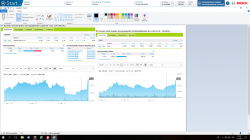Last year Musk published his Master Plan, Part Deux (a movie reference), 10 years after his original (unpublished) masterplan which he claims to have implemented in full. So we know what he thinks Tesla will have done by 2027. It will have added a pick-up, a small SUV, a heavy truck and an autonomous bus to its range. It will have introduced full autonomy by 2019, long before any other car maker. It will be the world’s biggest battery maker. It will have created an integrated home solar fast-charge system, and it will have built car-sharing and ride-hailing apps which will both create a market for Tesla cars and reduce the net cost of owning one.
Essentially, it will be a mobility company, not a car maker. It will have created an ecosystem of software and services which make ‘driving’ its cars cheaper and more convenient than any other option. This is the stuff that Silicon Valley is typically very good at, and the established car makers generally very bad at. And in the medium-to-long term, it’s what really counts. That’s why the markets value Tesla as highly as they do: one analyst says that Tesla’s autonomy plans alone account for a quarter of its valuation.
It’s also why the markets don’t care much if Tesla misses its targets now: by the time its services come on-stream, its car production will be sorted and will no longer be such an important part of the business. The same is true of that hyper-aggressive target on autonomy: Tesla will almost certainly miss it, but it will get there at least as fast as anyone else. Google’s Waymo project has way more cash, but Tesla gets the machine-learning benefits of having hundreds of thousands of Autopilot-equipped cars already on the road. Google will only offer its autonomous systems through the major car makers, who are notoriously risk-averse. Musk would rather get the tech out there first, and fine-tune later.





